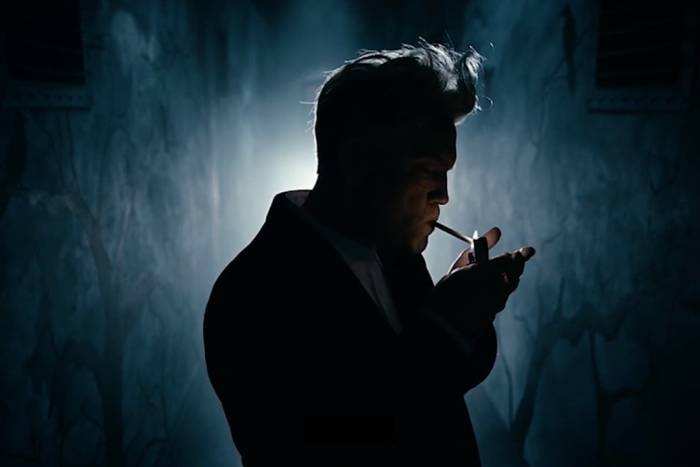To Immerse Oneself in the Fountains and Gardens of the 17th Century
Illustrations by the German engineer, Georg Andreas Böckler, reveal plans for extravagant fountains and geometric gardens, as often as not, never realized.
Each leaf of every plant and every flower in a garden is but one part of an archetype encompassing the entirety of that garden. It’s an archetype which has accompanied humankind since our oldest cosmogonies. Inseparable from their companions, fountains are reproductions of bodies of water and complete any garden as a miniature of the natural world, though made exclusively for our pleasure (much as bonsai are reproductions in miniature of the planet’s landscapes). A book from the 17th century provides detailed illustrations of gardens and fountains that could not but be produced through such a charming illusion. We don’t know if the plans depict places which only ever existed in the mind of the person who drew them, on the delicate leaves of a virtually unknown book.
A most strange book, Architectura Curiosa Nova was published in Nuremberg in 1664. It includes several dozen plans from the work of one, Georg Andreas Böckler, whose existence we can only be certain of based on the drawings he made and by his own documented architectural theories. An engineer, architect, and garden designer, he worked somewhere between art and science. His book deals primarily with his theories of hydrodynamics, with water pumping systems, designs to make a good number of extravagant fountains, and finally, with his geometric plans for the gardens of the nobility and of very wealthy people. Thus, Böckler’s delicate drawings provide a glimpse into what, during his own time, involved the realization and decoration of a garden – with grottos, fountains, and beds of flowers and plants – all designed with a precision between that of the mathematical and the labyrinthine.
Böckler’s fountains are each a strange presence. Their beauty lies, in some measure, in their precise manipulations of water, in the shapes and directions of their nozzles, each of which is drawn in equal precision and with textures depending on the nature of the fountain. Together, they form a veritable catalog of these beings, of magical objects (and they may even appear as a catalog of plants and flowers). The German artist imagined them merely to adorn the gardens of wealthy people. The first section of Architectura Curiosa Nova is dedicated specifically to the internal functioning of the fountains, and the concluding sections include schemes for both the fountains and the gardens.
Böckler’s style emerges with the marked influence of the famous Renaissance architect, Andrea Palladio (a lover of columns, country villas, and palaces). But it’s also marked by his career as an engineer, a career which included the construction of forts, water pumps, hydraulic machinery, and which accounts for his love of heraldry. His designs take us back to a distant age, one resplendent with beauty and precision. And though we don’t know if the gardens were ever made, Böckler’s drawings, by themselves, result in an enchanting stroll through his own very particular miniature world.


Related Articles
Pictorial spiritism (a woman's drawings guided by a spirit)
There are numerous examples in the history of self-taught artists which suggest an interrogation of that which we take for granted within the universe of art. Such was the case with figures like
Astounding fairytale illustrations from Japan
Fairy tales tribal stories— are more than childish tales. Such fictions, the characters of which inhabit our earliest memories, aren’t just literary works with an aesthetic and pleasant purpose. They
A cinematic poem and an ode to water: its rhythms, shapes and textures
Here lies One Whose Name was writ in Water. - John Keats Without water the equation of life, at least life as we know it, would be impossible. A growing hypothesis holds that water, including the
Watch beauty unfold through science in this "ode to a flower" (video)
The study of the microscopic is one of the richest, most aesthetic methods of understanding the world. Lucky is the scientist who, upon seeing something beautiful, is able to see all of the tiny
To invent those we love or to see them as they are? Love in two of the movies' favorite scenes
So much has been said already, of “love” that it’s difficult to add anything, much less something new. It’s possible, though, perhaps because even if you try to pass through the sieve of all our
This app allows you to find and preserve ancient typographies
Most people, even those who are far removed from the world of design, are familiar with some type of typography and its ability to transform any text, help out dyslexics or stretch an eight page paper
The secrets of the mind-body connection
For decades medical research has recognized the existence of the placebo effect — in which the assumption that a medication will help produces actual physical improvements. In addition to this, a
The sea as infinite laboratory
Much of our thinking on the shape of the world and the universe derives from the way scientists and artists have approached these topics over time. Our fascination with the mysteries of the
Sharing and collaborating - natural movements of the creative being
We might sometimes think that artistic or creative activity is, in essence, individualistic. The Genesis of Judeo-Christian tradition portrays a God whose decision to create the world is as vehement
John Malkovich becomes David Lynch (and other characters)
John Malkovich and David Lynch are, respectively, the actor and film director who’ve implicitly or explicitly addressed the issues of identity and its porous barriers through numerous projects. Now










